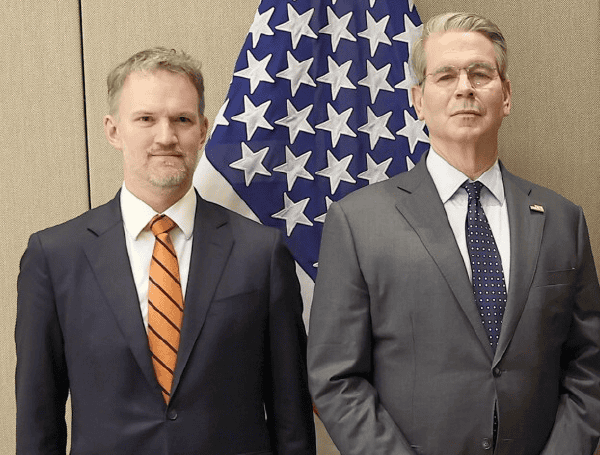The Trump administration today unveiled details of a new trade agreement with China, characterized by the White House as a “historic win” for the United States. The deal, finalized Sunday in Geneva, Switzerland, involves specific changes to tariffs and sets a framework for ongoing economic dialogue between the world’s two largest economies.
The agreement aims to address long-standing U.S. concerns regarding unfair trade practices and the significant trade imbalance with China, which recorded a $295.4 billion goods trade deficit with the U.S. in 2024. According to a fact sheet released by the administration, the steps agreed upon are intended to benefit American workers, farmers, and businesses.
RELATED: US, China Agree To Partially Suspend Recent Tariffs, Establish New Dialogue Mechanism
Here’s a breakdown of the components of the trade deal, which are scheduled for implementation by May 14, 2025:
China’s Commitments:
- China will remove retaliatory tariffs that were announced since April 4, 2025.
- They will also suspend or remove non-tariff countermeasures implemented against the U.S. since April 2, 2025.
- China will suspend its initial 34% tariff imposed on April 4, 2025, for a period of 90 days. However, during this 90-day pause, a 10% tariff will remain in effect on these goods.
United States’ Commitments:
- The U.S. will remove additional tariffs that were imposed on China on April 8 and April 9, 2025.
- The U.S. will retain all duties that were in place prior to April 2, 2025. This includes existing Section 301 tariffs (related to trade practices like intellectual property), Section 232 tariffs (often on steel and aluminum imports for national security reasons), tariffs imposed under the International Emergency Economic Powers Act related to the fentanyl crisis, and standard Most Favored Nation (MFN) tariffs.
- The U.S. will suspend its reciprocal 34% tariff, which was imposed on April 2, 2025, for a 90-day period. Similar to China’s action, a 10% tariff will be retained during this pause.
The administration emphasized that the continued 10% U.S. tariff serves as “a fair baseline that encourages domestic production, strengthens our supply chains and ensures that American trade policy supports American workers first.”
RELATED: U.S. Announces Trade Deal Reached With China In Geneva
The agreement establishes a mechanism for the U.S. and China to continue important discussions on trade and economic relations.
These ongoing talks, aimed at further rebalancing the trade relationship and potentially opening more market access for American exports, will involve key officials from both sides. U.S. representatives are expected to include Treasury Secretary Scott Bessent and United States Trade Representative Jamieson Greer, who will meet with China’s Vice Premier He Lifeng.
In a component separate from but included within the broader agreement, both nations have committed to taking “aggressive actions” to stop the flow of fentanyl and its precursor chemicals from China that illicit drug producers in North America use.
The White House fact sheet positioned the agreement as a demonstration of President Trump’s ability to secure deals benefiting the American public, working towards addressing the persistent trade deficit and protecting domestic interests. The outlined tariff adjustments represent specific reciprocal actions taken by both sides while maintaining certain baseline measures and setting the stage for further negotiations.
Please make a small donation to the Tampa Free Press to help sustain independent journalism. Your contribution enables us to continue delivering high-quality, local, and national news coverage.
Connect with us: Follow the Tampa Free Press on Facebook and Twitter for breaking news and updates.
Sign up: Subscribe to our free newsletter for a curated selection of top stories delivered straight to your inbox.
